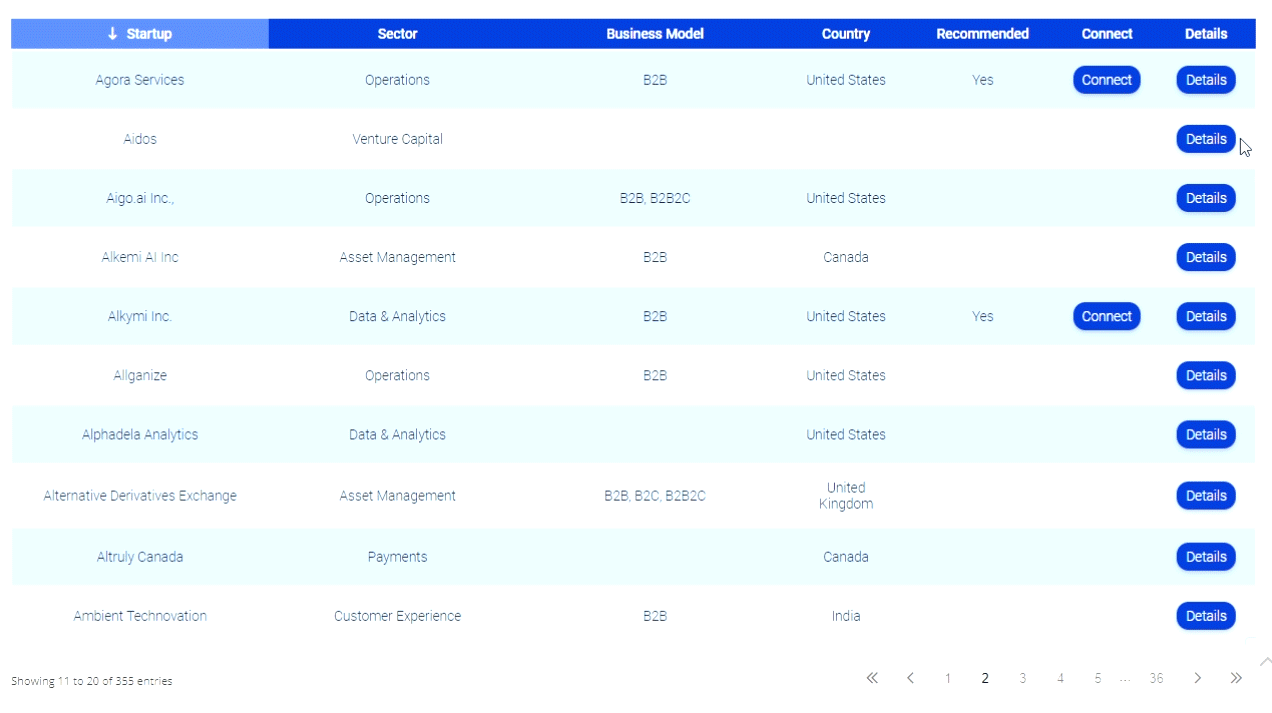Podcast: How FIs can tackle cloud migration cost increases
Financial institutions can look to financial operations strategies to manage costs when moving their operations to the cloud.
“We all know that financial institutions really operate on relatively thin margins, so having really strong governance, good controls, a good handle on your cloud costs is super important,” Donny Cross, vice president of strategy at scalable technology provider Rackspace, tells Bank Automation News on this episode of “The Buzz” podcast.
FinOps is “a management practice that promotes joint responsibility for governing, managing organizations’ cloud infrastructure and its costs,” Cross says. FinOps can play a role in helping manage cloud migration costs by leveraging AI, building budgets and identifying cost increases, he says.
Rackspace offers a FinOps assessment, which includes a two-month overview of a company’s cloud environment, according to the Rackspace website. Following the assessment, Rackspace can identify “low-effort, high-impact adjustments” to the cloud to promote savings.
Listen as Rackspace’s Cross discusses cloud migration, cost management and FinOps.
Subscribe to The Buzz Podcast on iTunes, Spotify, Google podcasts, or download the episode.
The following is a transcript generated by AI technology that has been lightly edited but still contains errors.
Whitney McDonald 13:05:32
Hello and welcome to the buzz of bank automation news podcast. My name is Wendy McDonald and I’m the editor of bank automation News. Today is June 11 2020, for joining me as Donnie Krause, Vice President of Strategy for Rackspace, he will discuss how fin ops can help financial institutions approach cloud migration, and the cost and budgeting associated with it. Hi, Dani, welcome to The Buzz.
Donny Cross 13:05:53
Thank you. And thanks so much for having me today. Donnie cross, I act as the CFO for the Rackspace, public cloud division for the Americas. I also oversee our fin ops practice, which is one of the largest in the world, we have over 1.3 billion under management, and then Rackspace. As a whole, we are a very large, multi cloud and hybrid cloud provider, both from a private cloud on prem standpoint, but also in the public cloud and one of the largest providers in this services.
Whitney McDonald 13:06:29
Now, tell our listeners a little bit about finaps. That’s a big part of your role. So if you could tell us about the process of maximizing value through the cloud and what that can bring to financial institutions. Those folks that might be listening today.
Donny Cross 13:06:43
I think, for folks not familiar with phenomics. It really is. It’s a management practice that promotes joint responsibility for governing, managing organizations, cloud infrastructure and its costs.
Whitney McDonald 13:06:58
And how would a financial institution really approach they’re fun ops operations? I guess?
Donny Cross 13:07:05
I think for a financial institution, it’s especially relevant, right for a couple of reasons. One is we all know that financial institutions really operated on relatively thin margins. So having really strong governance, good controls, a good handle on your cloud costs is super important. And number two, from a regulatory and compliance standpoint, if you have a good finance practice in place, you really understand the details of your cloud costs and how it relates to your business volumes. Right. So from a regulatory standpoint, being able to be super transparent about your controls, and the components of your cloud costs, I think, are really
Whitney McDonald 13:07:45
important. So we know and we kind of just alluded to that here. But Cloud migration is a hot topic. And it’s a huge investment. But it’s kind of unnecessary investment, we can take a step back here and just talk about the importance of having this cloud migration strategy. Why FIS need to be tapping into that and investing and then we can kind of take it a step further in a second. But let’s talk through the importance of having this cloud strategy and getting your operations to the cloud.
Donny Cross 13:08:12
Yeah, this is this is such an important topic. And I will tell you that it is such a common story for us to come into a client environment, and they’re experiencing cost overruns, and cost increases post cloud migration. And the reason is, right, we see so many customers go through what we call a lift and shift migration, essentially just pick up their applications or workloads and move them to the public cloud. But what they see is they they kind of have their their data center now in the cloud, right? And because the cloud, really that pent up demand issued goes away, everything becomes on demand, then they see themselves consuming much higher volumes and the subsequent cost increase. That’s off all the alarm bells, right. So that that whole issue and drama is easily preventable, right? By getting fit ops practices and disciplines in place during your migration planning. So that’s what we promote. And it’s something that’s, again, not overly complex or difficult to do. Maybe
Whitney McDonald 13:09:22
we can talk through what that migration planning might look like what those conversations by look like the considerations, benefits and how you really consider the cost versus what you’re trying to achieve. What are those conversations with your clients look like?
Donny Cross 13:09:37
So again, when you have kind of this, this Phillips function or discipline in place, and I’m talking about, you’re hiring Philips experts, actually, I’m talking about a joint responsibility where you’re bringing to that migration planning function, technical stakeholders, financial stakeholders, and the business stakeholders. And these three in conjunction then can align on the migration schedule, the sequence, the expected costs, once you land in the cloud, and the ramp of those costs over time, but you must also agree on the ramp down or elimination of the cost from the on prem side, right, I mean, hardware software maintenance labor, data center util. At least you kind of go down the list right? See your it’s so important that you have joint agreement and ownership on that plan as you begin to execute, and therefore kind of avoiding the surprises afterwards.
Whitney McDonald 13:10:46
Yes, avoiding surprises is usually a good thing. That’s usually a positive for financial institutions when you can avoid problems down the road. And that kind of goes toward the strategy, right? You want to have what all your steps are in place, what are you trying to achieve? How much do you want to cost? You don’t want to come across those surprises when you’ve already started implementing a process. So I know that step one is probably having that strategy in place having those conversations, but what would really the implementation of a finished solution look like? So you’ve you’ve come across your or you’ve come up with your strategy, and you have your plan? So you’re ready to implement? What does that look like?
Donny Cross 13:11:25
Yeah, I would say really, step one is getting, you’ve got to have proper visibility. So we call this observability, right, and I would tell you that the hyperscalers, and we’re talking about AWS, Azure and GCP, they’ve done a great job in improving the native observability of their platforms over time. But we still see that there’s a gap. And there’s a number of third party tools, observability tools that provide that additional visibility later. Because you really want to have, you know, a best practice tagging strategy. So you can align costs to the actual workloads and functions. And so getting that in place really is step one, and then having that joint ownership of that thin ops function in place to govern and manage goes along with that.
Whitney McDonald 13:12:18
So when you talk about cost, I mean, we follow pretty closely tech spend, and what all of these types of cloud migration, for example, might cost you. And sometimes it’s hard to quantify. So when you have like a finance solution in place, it’s easier to kind of pinpoint where your savings are, where you’re spending.
Donny Cross 13:12:37
Oh, absolutely, absolutely. And I’ll tell you that there’s a number of steps you go through as you’re optimizing those costs, right? Remember that, and this, this is a key takeaway. We’ve spent decades getting really good at governing and managing our IT costs on prem. Doing this in the cloud is completely different. For going from a CapEx model to a completely APICs model. It is completely demand based, right, volume driven. And so managing those costs is completely different. And so again, having that structure in place, we often advocate that organizations put together a finaps charter, let’s outline the objectives, the responsibilities, the stakeholders, the ownership, that we’re going to then kind of enforce and abide by going forward. But having that in place is so important. When you combine that then with the the visibility or observability I’m speaking of, you can then like No kidding, really understand and govern and optimize those costs. On the optimization front, it’s so common for our customers to over provision in the cloud. The cloud is an elastic resource, it gives us the opportunity to, to right size, the environment, according to our workload demands, right. And then on top of that, we’re able to eliminate waste, we’re able to put financial instruments or reservations in place that dramatically drive that cost down. So it really is a fantastic, I would say environment, right to optimize and align costs to workloads or business function. Yeah,
Whitney McDonald 13:14:26
I mean, that’s essential right now, like you can’t you can’t have a conversation with a financial institution without hearing about cost savings or added efficiencies and being able to pinpoint how much something is costing you or where efficiencies are coming in. That’s, that’s key and almost priceless right now. So let’s say you have this strategy in place you’re ready to implement, what kind of technology do you have to have in place in order to benefit from a solution like this?
Donny Cross 13:14:53
Yeah, I mentioned before, right, the native tooling, native flush, that has gotten much better. But I also really do advocate for third party tooling. We still see a gap in really what customers need in terms of detail, and flexibility to govern and optimize their costs. So getting the proper third party tool in place, and yeah, I’m not going to recommend a specific tool. But I would tell you that if you look at Gartner, Forrester, any of the big analysts they have reviews of we call them CMPs cloud management platforms, right and Though you can quickly see who the top 345 are, that you might look at. Or if you’re using a partner, you know, they’re going to have a tool of choice. So we really do see that being essential to get the proper visibility to really jumpstart your your Phillips discipline.
Whitney McDonald 13:15:50
Now, speaking of technology, and it’s hard to have a conversation right now with talk without talking about AI, what role can AI play in assisting finaps? Yeah,
Donny Cross 13:16:00
thank you so much, right? We can’t have an IT discussion today without also talking about AI. Right? I know, it’s on everyone’s mind. And I’ll tell you that there are actually there are a number of automation features and functions available that are AI light, right without being true generative AI, but let me touch on a few. So in the cloud, we have the ability to set up real time alerting, and anomaly detection. Super important, right. So we had a customer just a few weeks ago, that spun up a generative AI program in test over the weekend. And because they had anomaly detection in place, they were able to shut it down within 48 hours, because it was taking off kind of some runaway costs, right. So if they had let that run until month end, it would have been a disaster, right? So you must take advantage of cost alerting anomaly detection. Secondly, I would point to resource optimization. So the cloud offers us a number of functions that can utilize auto scaling. This allows us to ramp up or ramp down, you know, resource consumption based on the workloads needs or demands, right. So super important. And lastly, I would point to predictive analytics, the forecasting functionality that’s available now is so much better than it was historically so we can look back at do trending analysis, we can easily pick out you know, the the anomalies or the one time events, and really get a very good picture of how to forecast our future spending consumption before we begin to layer on. Okay, now, we’re also going to do these optimizations are these new workloads are coming in? So the forecasting function has gotten much more advanced?
Whitney McDonald 13:18:01
Yeah, the forecasting is really interesting. And it kind of gets me into this, this next question about tech spend, and budgeting and how this can really be a tool for those folks that are on the decision making side when it does come to what goes into tech spend. So how can this be used for budgeting?
Donny Cross 13:18:20
Yeah, so this that, that’s a really good question, I will tell you that we have the most success with our customers who are willing to set up dashboards, right. So we’re, we’re showing budget, are showing forecast, and we’re showing actuals against those measures, right. And when you can do that aligned to business units, you begin to get traction, because people pay attention, they can see that what they’re doing has a direct impact on these results and how they’re being measured. The old management as you know, what gets measured gets done. Right. So this actually does apply. And again, you have proper tagging, we have proper visibility and proper reporting. We see that affecting behavior, which is what we want.
Whitney McDonald 13:19:10
Yeah, I mean, it takes the guessing out of it, it’s right there in front of you. That’s great. Um, now let’s say you’re a listener, here, you’re thinking about or you’re in the process of cloud migration. Of course, you have cost savings on your mind, you’re prioritizing where you should spend and making those decisions. What’s an immediate takeaway, that they could go back to their team and say, this is something that we should be doing or an area that we could prioritize in the short term? Yeah,
Donny Cross 13:19:39
I would say the takeaways are really twofold. One is it’s so important, you must recognize that managing governing your costs in the cloud is completely different. So you cannot rely on past practices as you plan your journey to the cloud number one, number two is from a fin ops perspective, you have to get started. You must acknowledge this is a new and different function or discipline that you want to embed into your overall governance structure for the cloud going forward. So number one is different. Number two, get started.
Whitney McDonald 13:20:21
You been listening to the buzz, a bank automation news podcast, please follow us on LinkedIn. And as a reminder, you can rate this podcast on your platform of choice. Thank you for your time and Be sure to visit us at Bank automation news.com For more automation news
Transcribed by https://otter.ai
BAN_0611_The Buzz_WM_otter_ai









